13 Rare Depression Glass Items Once Given Away for Free
During the Great Depression, glassware became more than just a household essential. Many companies offered beautiful pieces as free gifts with food, soap, or gas purchases to attract customers. These items, now known as Depression Glass, have become highly collectible for their color, charm, and history. Each piece tells a story of hope and creativity during a difficult time. From pink floral designs to rich cobalt blue patterns, these treasures continue to capture attention at antique shows. Collectors admire their delicate beauty and connection to a unique era of American life.
This post may contain affiliate links, which helps keep this content free. Please read our disclosure for more info.
Royal Lace Cobalt Blue Cup and Saucer Set
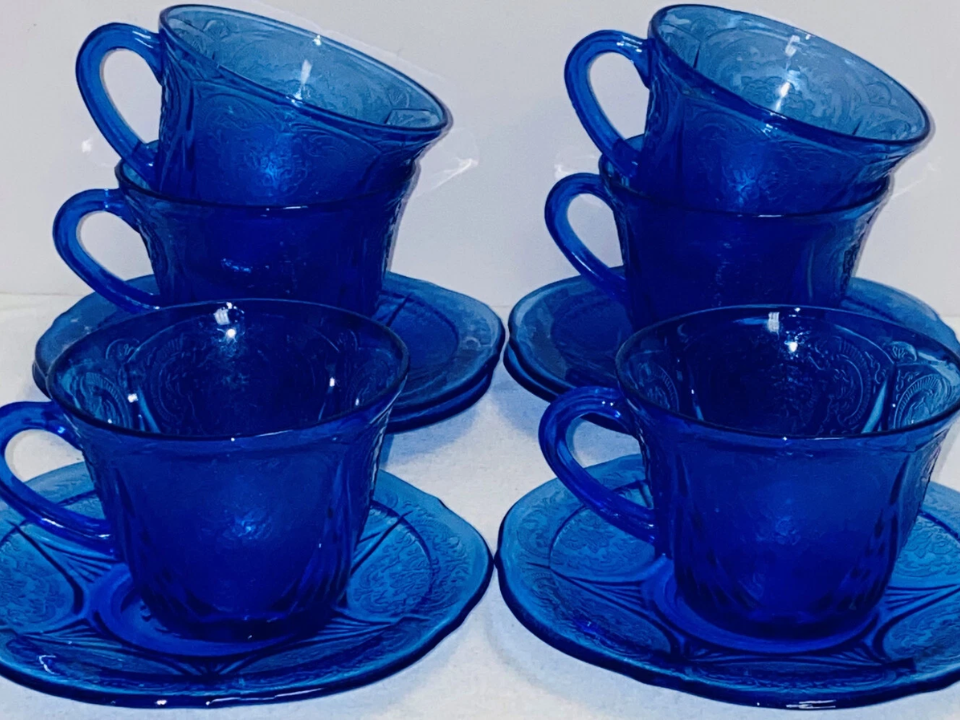
Royal Lace in cobalt blue is one of the most sought-after Depression Glass patterns. Made by Hazel-Atlas Glass Company between 1934 and 1941, it stands out for its deep blue color and delicate floral motifs. What once came as a free gift with oatmeal or detergent now holds high value among collectors. A complete cup and saucer set can sell for around $120 today depending on its condition.
Collectors admire the fine details of Royal Lace pieces since the embossed lace pattern looks almost handmade. The cobalt hue adds a level of richness that was uncommon for mass-produced glassware of the 1930s. Sets with no chips or clouding are particularly valuable and are often displayed in glass cabinets as statement pieces.
Cameo “Ballerina” Green Pitcher
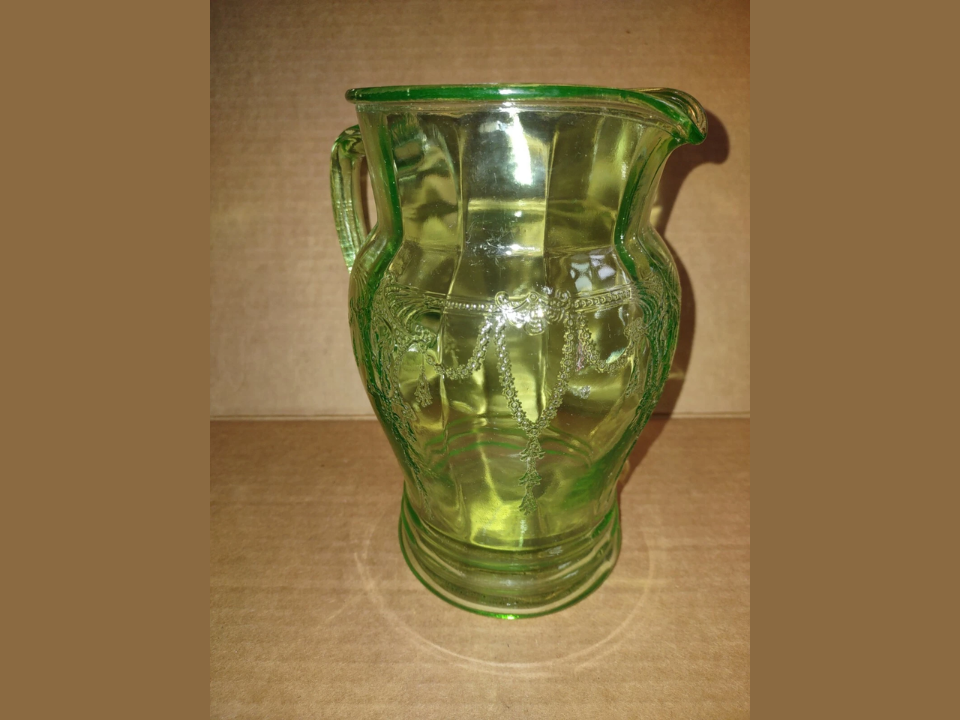
Produced by Hocking Glass Company from 1930 to 1934, the Cameo pattern features a dancing girl surrounded by intricate drapery designs. The green pitcher was part of many grocery promotions during the Depression era and is now one of the rarest items in the set. A mint-condition pitcher can reach values near $250 in the collector market.
The appeal of the Cameo pattern lies in its graceful design and balanced shape. Many collectors say the green hue glows beautifully under light, especially in natural daylight. This makes it a favorite display piece and a charming reminder of the time when elegance could be found in everyday items.
Pink Mayfair “Open Rose” Cookie Jar
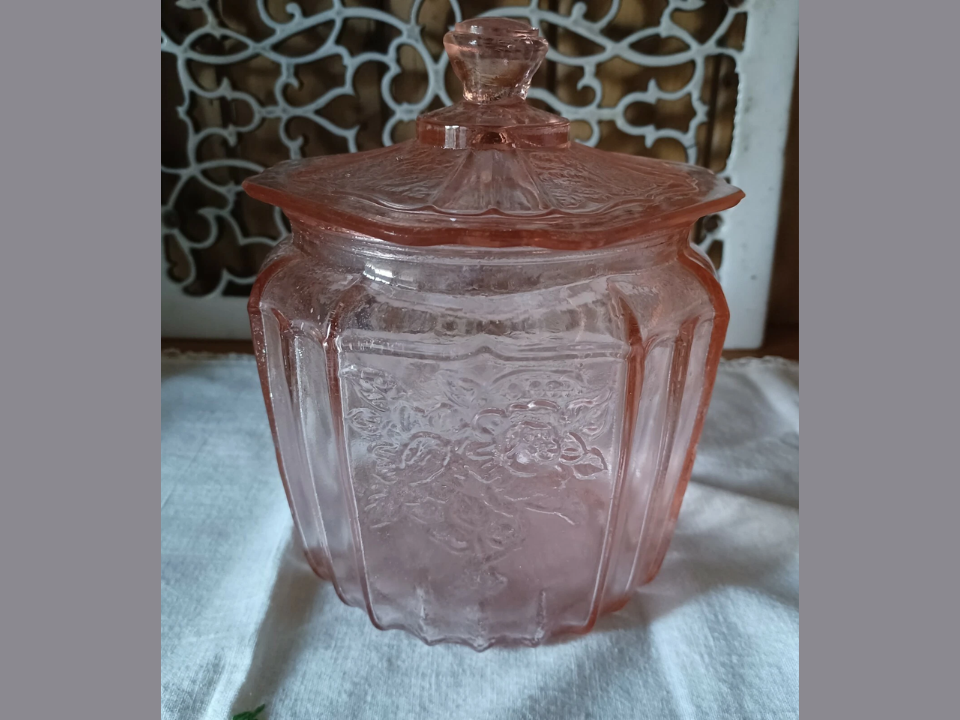
Mayfair, known as “Open Rose,” was made by Hocking Glass between 1931 and 1937. The pink cookie jar was once given as a grocery incentive and is now among the most desirable pieces in Depression Glass collections. Because the lid is often missing or damaged, a complete jar can command prices up to $400.
Collectors love the soft pink tint and the intricate rose designs that decorate the surface. It was both decorative and practical, reflecting the spirit of beauty in hard times. Today, owning one feels like holding a piece of 1930s domestic life preserved in glass.
Cherry Blossom Pink Bowl
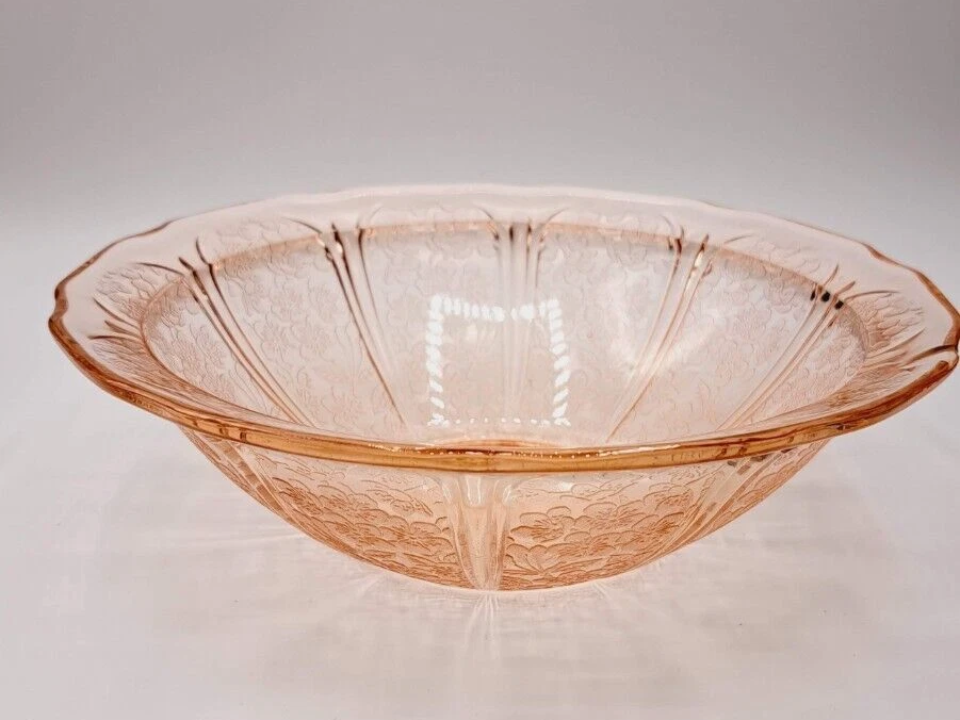
The Cherry Blossom pattern by Jeannette Glass Company is one of the most recognizable Depression Glass designs. It was produced from 1930 to 1939, and pink bowls were often handed out as promotional items at theaters or grocery stores. A large bowl in perfect condition can be valued around $200.
The raised cherry and leaf designs give this glass a cheerful personality that brightens any table. The soft pastel pink color reflects the optimism people needed during those years. Finding a set without any scratches or discoloration is considered a lucky discovery for collectors.
Patrician “Spoke” Amber Serving Platter

Produced by Federal Glass Company from 1933 to 1937, the Patrician pattern, known as “Spoke,” was distributed through cereal box promotions and household giveaways. The amber serving platter is one of the hardest pieces to find today, with current values reaching around $90.
Collectors enjoy its sunlit amber tone and the symmetrical spoke-like design that radiates from the center. The platter looks particularly elegant when displayed against natural light or used during gatherings with vintage décor themes. It captures the spirit of Depression-era hospitality in glass form.
Florentine No. 1 Yellow Creamer and Sugar Set
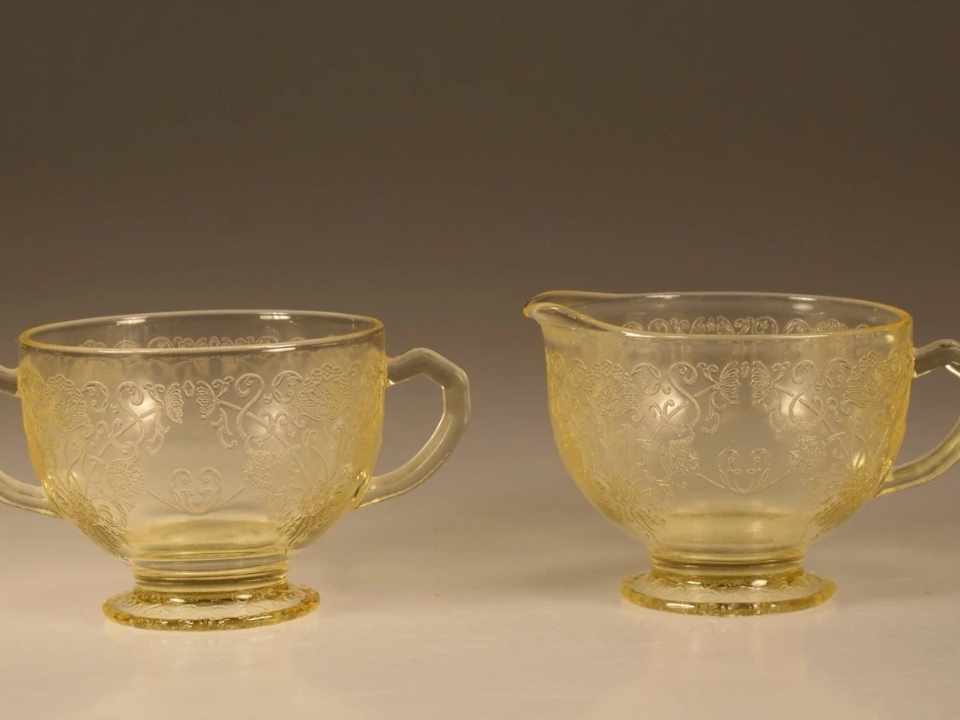
Hazel-Atlas made the Florentine No. 1 pattern, nicknamed “Poppy,” between 1932 and 1935. The yellow creamer and sugar set were once found as free gifts in store promotions. Today, a matching pair can be worth around $65, especially if free from cracks or fading.
This set stands out for its poppy flower design, which gives it a warm and inviting look. The yellow hue brings a sunny feel that reflects the optimism of the 1930s. Collectors value it for both its beauty and its reminder of cheerful simplicity in hard times.
Princess Blue Footed Tumbler
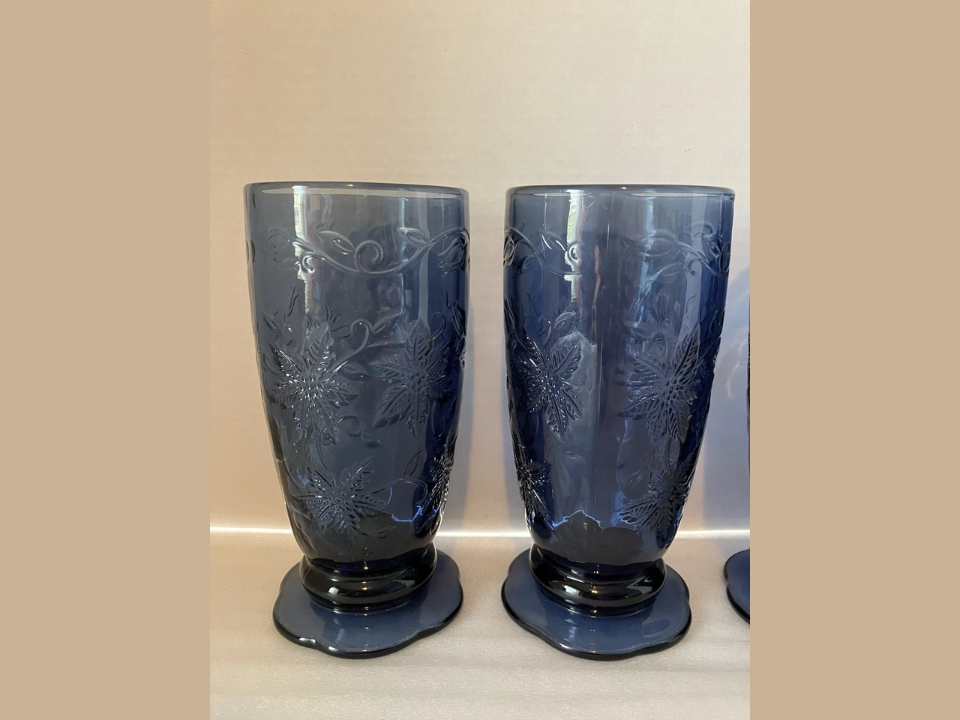
The Princess pattern was produced by Hocking Glass from 1931 to 1935 and was available in pink, green, and blue. The blue footed tumbler is among the rarest pieces, as it was often given as part of dinnerware promotions. Today, it can fetch around $110 depending on condition.
The geometric design with arched panels gives it an art deco flair. Collectors admire the deep color and sturdy design that still feels graceful in hand. This piece reflects how Depression Glass managed to combine style and practicality beautifully.
Adam Pink Butter Dish with Lid

Produced by Jeannette Glass from 1932 to 1934, the Adam pattern is known for its balanced floral etching. The pink butter dish was a promotional giveaway during grocery store events and remains a prized collectible today. A complete dish with lid can reach about $175.
Collectors often find that the butter dish’s lid is the most fragile part, making intact sets particularly valuable. The simple yet elegant pattern pairs well with other pink Depression Glass pieces. Many enthusiasts use these dishes as display centerpieces to highlight their collection’s charm.
Block Optic Green Pitcher
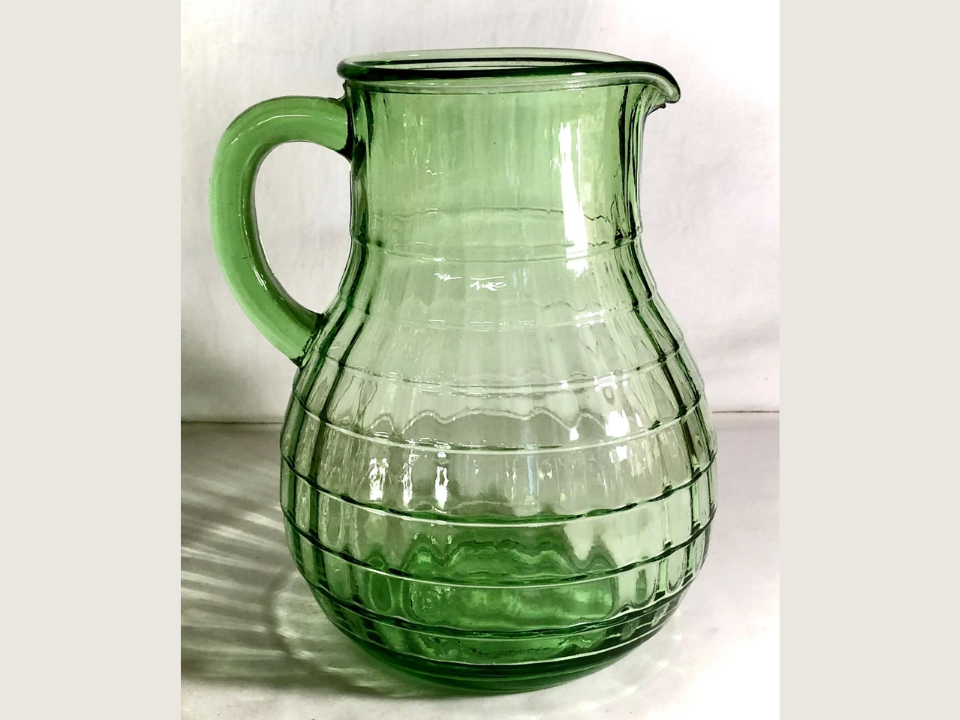
The Block Optic pattern, made by Hocking Glass between 1929 and 1933, features a distinctive block design within the glass. Green pitchers were often part of promotional giveaways through department stores and gas stations. A well-preserved piece can now sell for around $140.
The geometric pattern reflects light beautifully, creating a subtle checkered effect when viewed in sunlight. Collectors admire its symmetry and the way it captures the artistry of early mass production. Its sturdy form and nostalgic color make it a favorite among Depression Glass fans.
Dogwood Pink Salad Plate
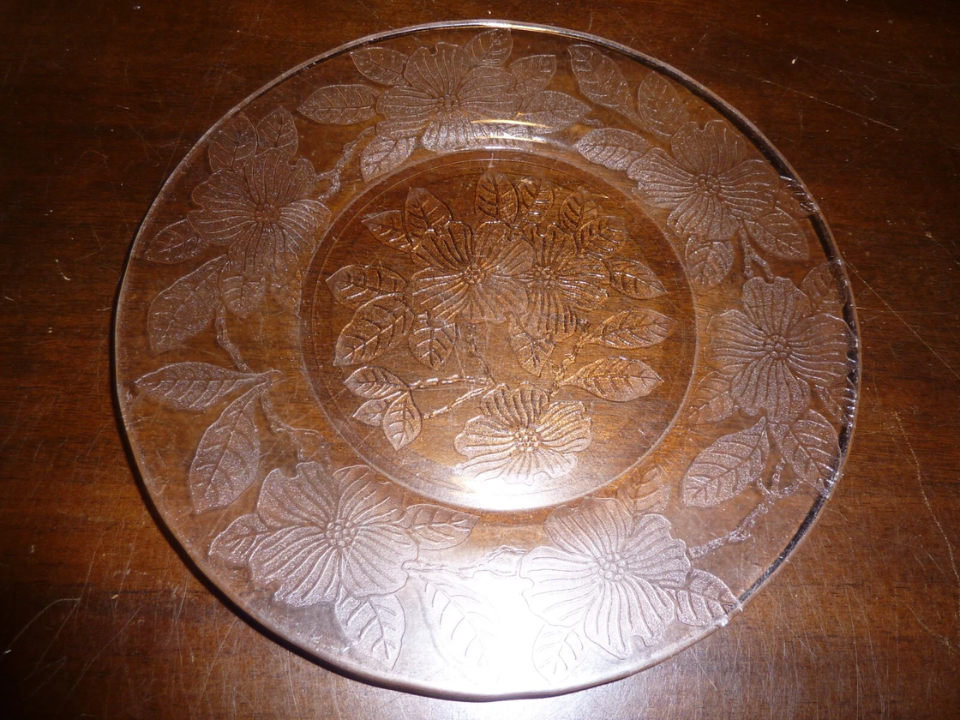
Made by MacBeth-Evans Glass Company between 1929 and 1932, the Dogwood pattern is known for its delicate raised floral design. The pink salad plate was given away during store promotions and is now considered one of the most attractive pieces of Depression Glass. A single plate can sell for around $60.
Collectors admire how the soft pink hue pairs with the intricate dogwood blossom design. The pattern creates a romantic feel that evokes the gentle beauty of spring. Sets with minimal scratches or fading are among the most sought-after for vintage display collections.
Diana Pink Candy Dish
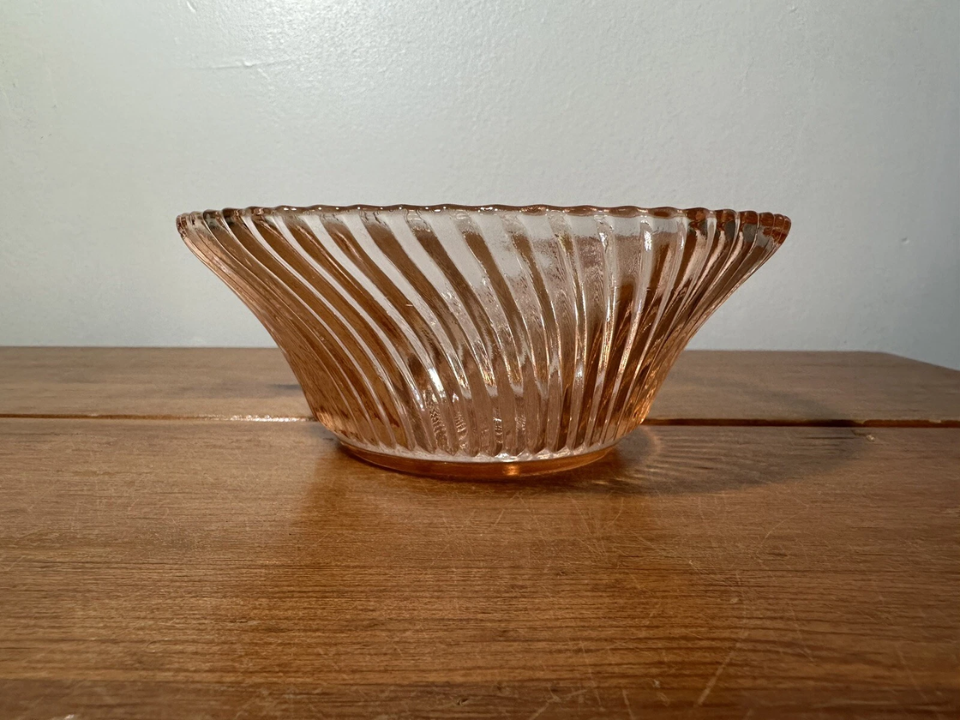
Produced by Federal Glass from 1937 to 1941, the Diana pattern features curved lines that form a subtle starburst effect. The pink candy dish was often distributed at movie theaters as a promotional prize. A complete dish can bring around $130 at antique shows today.
Its combination of curved handles and soft pink hue gives it an elegant yet welcoming appearance. Collectors value its smooth finish and sturdy structure that have stood the test of time. The Diana pattern remains an admired example of beauty within everyday glassware.
Iris and Herringbone Crystal Vase

Jeannette Glass introduced the Iris and Herringbone pattern in 1928, and it quickly became popular for its delicate floral etching. The crystal vase version was distributed through store giveaways and is now considered rare. Its current market value is around $150.
Collectors love how the clear glass captures light, showing off the detailed iris flowers across the surface. The tall design makes it perfect for displaying fresh flowers or standing alone as a decorative centerpiece. Many find it remarkable that such elegant pieces were once given away for free.
Princess Green Oval Platter
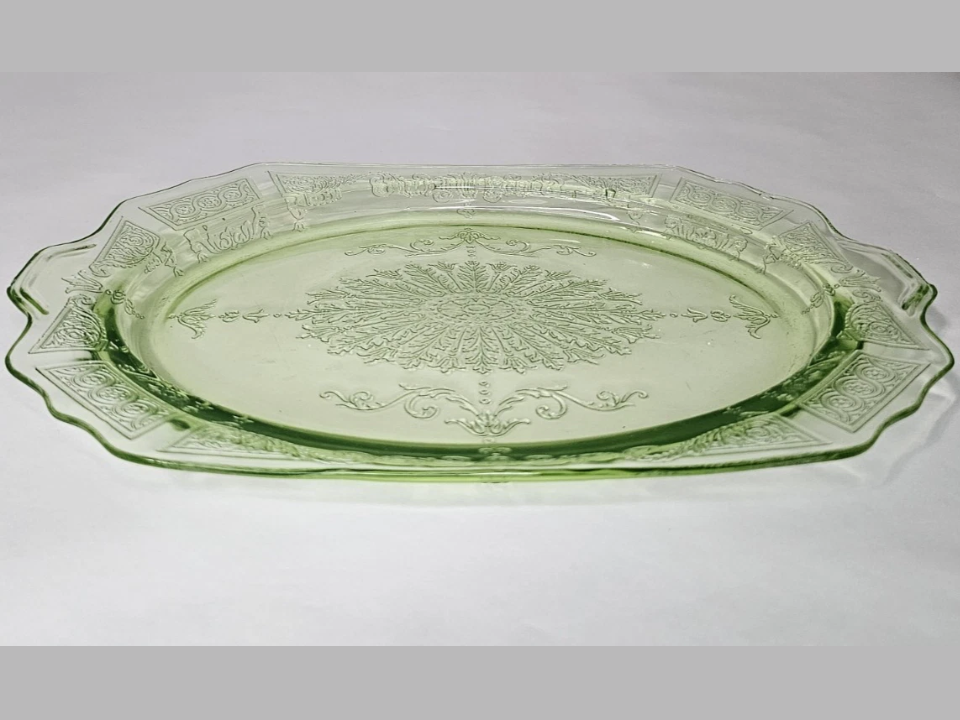
The Princess pattern by Hocking Glass was popular for its bold shapes and panel designs. The green oval platter was part of dinnerware giveaways and now commands around $110 if it is free from scratches or cracks.
Collectors appreciate how the platter combines strength with delicate style. The color reflects the rich green hues typical of the Depression era. When displayed in natural light, its geometric panels sparkle beautifully, making it a favorite among collectors of vintage tableware.
This article originally appeared on Avocadu.
